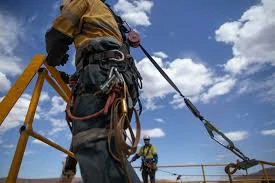


 349,500 Offered Certificates
349,500 Offered Certificates
 24/7 Online Training
24/7 Online Training
 Money Back Guarantee
Money Back Guarantee
 Fully Accredited Courses
Fully Accredited Courses

Created at: 22-02-2025 18:12
In today’s fast-paced and ever-evolving work environments, ensuring safety for personnel working at heights is more crucial than ever. With a significantnumber of accidents occurring due to falls from heights, integrating advanced technologies into Working at Heights training can bolster safety measures and help prevent mishaps.
Traditional training programs, while effective, often lack real-time data and immersive experiences that modern technology can provide. The integration of innovative tools enhances training effectiveness, ensuring that workers are better equipped to handle the demands of their roles safely. As a result, organizations increasingly turn to sophisticated technologies to enhance Working at Heights safety.
As businesses seek to ensure a safer work environment, several emerging technologies are making a significant impact on Working at Heights training. Here are some leading innovations:
Integrating these advanced technologies into Working at Heights training courses can seem daunting for many businesses. However, a systematic approach can streamline the process:
Several organizations have successfully integrated advanced technologies into their Working at Heights certification processes:
Incorporating advanced technologies into Working at Heights safety courses not only reduces risks but also keeps employees engaged. Virtual reality simulations offer realistic experiences, allowing workers to practice in controlled environments where they can learn from mistakes without real-world consequences.
As we look toward the future, adopting modern safety solutions in Working at Heights training is not just a trend—it is an essential step toward creating safer workplaces. For organizations in Dublin, Cork, and Galway, this means adapting to the current landscape and providing Certified Working at Heights training that prioritizes worker safety using all available resources.
Ready to elevate your safety standards? Contact us today at [email protected] to learn more about our cutting-edge training solutions.